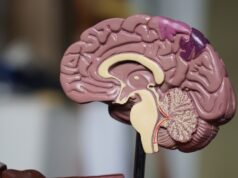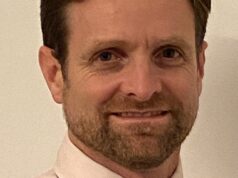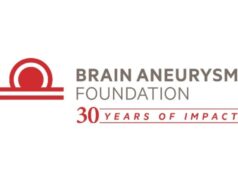
The Brain Aneurysm Foundation (BAF) has announced the recipients of its 2023 research grants, providing support to academic researchers studying the underlying biology of aneurysms or developing new treatment methods.
This year’s grantees include leading academic researchers from across the USA and Canada whose work includes efforts to develop biomarkers to better predict and develop potential therapeutics for aneurysms; understand the impact of genetics on rupture outcomes; and create new device technology, drug delivery and robotic approaches to evolve treatment.
“I am thrilled with the quality and relevance of the programmes being led by this year’s grant recipients,” said Christopher Ogilvy (Beth Israel Deaconess Medical Center, Boston, USA). “In each case, we believe their work will directly support the field and build upon our understanding of why and how aneurysms form, who they are more likely to impact, and how to continuously improve treatment. This research will have a significant impact on our understanding of the underlying causes of the disease, and in creating better treatments and tools, as we continue to better identify and treat those facing a potentially deadly rupture.”
According to a BAF press release, the awards were announced at the organisation’s 17th Annual Research Grant Symposium (21 September, Charleston, USA). Overall BAF grant giving has now eclipsed US$5 million, the release adds.
“We believe our contributions play an essential role in advancing science and the development of new innovations that will contribute to reducing the prevalence and impact of brain aneurysms,” said Christine Buckley, the BAF’s executive director. “These early grants are key to fostering an ecosystem that brings ideas from academia to the clinic with the goal of transforming patient care and saving lives.”
Below is the full list of 2023 BAF research grant recipients:
- Edgar A Samaniego (University of Iowa, Iowa City, USA)—radiomic characterisation of brain aneurysms
- Khalid Malik (Oakland University, Rochester, USA)—integrating federated and neuro-symbolic artificial intelligence for improved aneurysm detection and rupture prediction
- Sri Veeturi (University of Buffalo, Buffalo, USA)—exploring the relationship between imaging- and blood-based aneurysm biomarkers and the pathobiology of the aneurysm wall
- Joelle Hartke (Barrow Neurological Institute, Phoenix, USA)—the effect of growth-arrest specific 6 on intracranial aneurysm formation and rupture
- Hiroki Uchikawa (Barrow Neurological Institute, Phoenix, USA)—clonal haematopoiesis of indeterminate potential in intracranial aneurysms
- Husain Sodawalla (Northern Arizona University, Flagstaff, USA)—development of a US Food and Drug Administration-approved benchtop model for delayed aneurysm rupture studies
- Peter Czarnecki (Beth Israel Deaconess Medical Center, Boston, USA)—the role of polycystic kidney disease gene variants in brain aneurysm development
- Omid Asgari (Northern Arizona University, Flagstaff, USA)—development of a novel balloon-mesh device to improve the embolisation of aneurysms
- Sophia Robertson (Northern Arizona University, Flagstaff, USA)—development of a novel biocompatible polymer coating for aneurysm treatment devices
- Naoki Kaneko (University of California Los Angeles, Los Angeles, USA)—advancing brain aneurysm treatments with robotics: an investigation into the effectiveness of robotic assisted endovascular procedures
- Seungil Kim (University of Pittsburgh, Pittsburgh, USA)—evaluation of healing progress in the extracellular matrix-based injectable embolic delivering therapeutic proteins in a murine cerebral saccular aneurysm model
- Abdelsimar Omar II (University of Toronto, Toronto, Canada)—revisiting the comparative effectiveness of clipping versus coiling for aneurysmal subarachnoid haemorrhage with big data: a population-based analysis using the target trial framework
- Sithara Thomas (The University of Texas Health Science Center at Houston, Houston, USA)—elucidation of role of histone deacetylase 2 (HDAC2) in epigenetic repression of blood barrier genes during subarachnoid haemorrhage in mice: protective effect of overexpression of its target (zinc-finger in cerebellum [ZIC3])
- Sungha Hong (The University of Texas Health Science Center at Houston, Houston, USA)—role of transient receptor potential vanilloid 1 (TRPV1) in rescuing global ischaemia following subarachnoid haemorrhage in aged mice
- Scott Simon/James Connor (Pennsylvania State University, University Park, USA)—impact of genetic variation in iron metabolism on aneurysmal subarachnoid haemorrhage outcomes
- Devin McBride (The University of Texas Health Science Center at Houston, Houston, USA)—neutrophil extracellular traps (NETs) as a biomarker of delayed deficits after subarachnoid haemorrhage
- Devin McBride (The University of Texas Health Science Center at Houston, Houston, USA)—neutrophil phenotype predicts delayed deficits after subarachnoid haemorrhage









